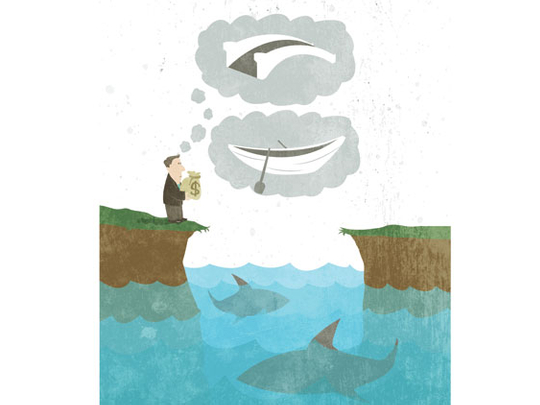
During the financial crisis, everyone was savvy. The problem was never the shortage of cash, but the fact that people lost the lust to invest in anything other than gold and real estate.
For the latter, the options were limited to properties that were already leased out fully. We saw how gold exceed $2,000 per ounce and its descent to $1,200 levels.
Last year has been the worst ever for bonds, with the first week of December witnessing a withdrawal of $72 billion from mutual funds. The number surpassed the $63 billion in 1994. Also in December 2013, Dow Jones topped its previous high in October of 2007 to a new record high of 14,253.77.
At the local level, stocks that dropped to below their face value have recovered. Emaar has achieved Dh10 and over after a very, very long time of sluggish performance. The issue was not with the company itself during the crisis, but that’s a completely different matter.
The switch from one investment to another is normal. It’s also no surprise that people made the move from static investments to more dynamic ones, making them less risk-averse and more aggressive in their investment approach.
No matter how long you hold gold, there is no return to be made except capital which takes years and is guaranteed by increased demand. In other words, whenever the cycle is down or a crisis is at the door.
As for bonds, they pay you fine except that you are unlikely to beat inflation. Take National Bonds for instance. Their first announced profits, if my memory serves me well, was a little above 7 per cent.
Such a return, in whatever sense, is considered very good for a safe investment. But of course, that couldn’t be maintained. Other bonds are those of governments, though these are for high net investors.
So back to reality, and looking at what banks generally offer, there is no single product that beats inflation or would generate a decent return after banks obtain their cuts. So, what are the options?
First, you need to answer the crucial question of how much risk you willing to take. After that, you need to have a basic sense of what kind of return you can have with taking on such a risk, and whether or not you are willing to accept it.
This attests to the importance of financial planning, saving, better consumption and a more efficient spending. For you and me, an acceptable return is one that beats announced inflation, can do better than 8-10 per cent from real estate, and is more liquid too.
The reason I mention all of the above options is for a simple reason; they somewhat make the ideal combination. However, the individual make-up of each asset class in your portfolio is up to you and your risk-taking appetite or risk-aversion.
To simplify, a par for the course l portfolio should have three main components: cash, stocks, and bonds; with cash being no more than 10 per cent. The remaining is distributed based on risk again.
Bonds do not necessarily mean those found locally; US Treasuries for example can be a choice. Also, these can be obtained by investing in mutual funds that specialise in bonds, except they dilute returns somehow.
Stocks are a bit trickier. Here you ask yourself whether you are looking for an annual return through dividends or cash back, or a capital gain caused by value gains, or both.
Note that the best strategy of all is in fact to buy and hold. A good company’s stock will always make a comeback. Also, bear in mind that high dividends might be a sign of sluggish or no growth opportunities, which means that you may not be getting dividends in the future and, in fact, a loss in capital should the price decline.
The thought that I want to leave you with is: Why is there a sudden surge in the number of Russians investors entering the UAE?
— The writer is a commercial consultant and a commentator on economic affairs. You can follow him on Twitter at www.twitter.com/aj_alshaali.











